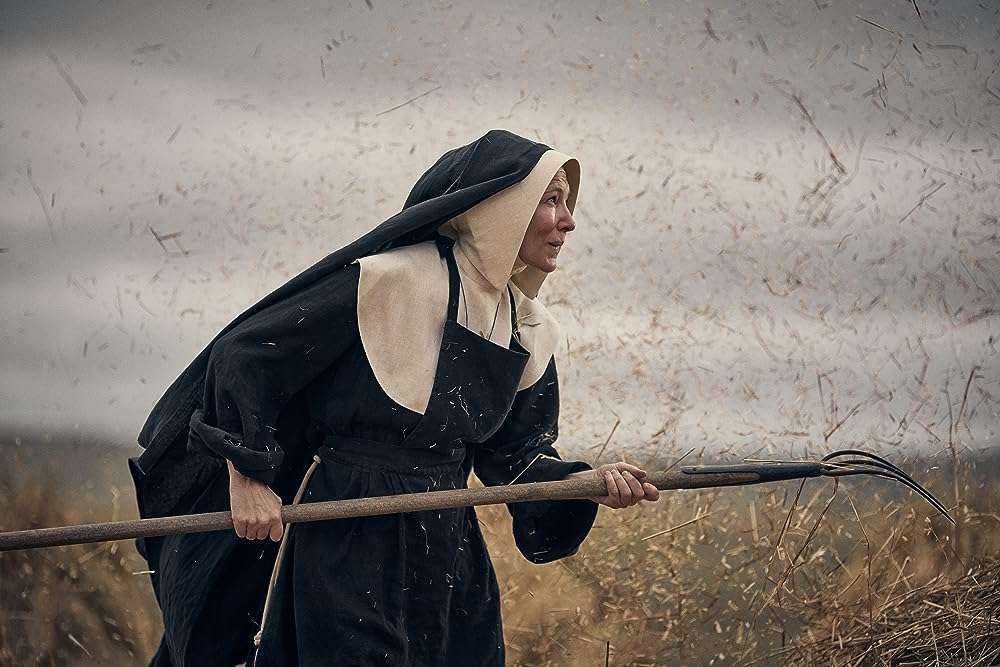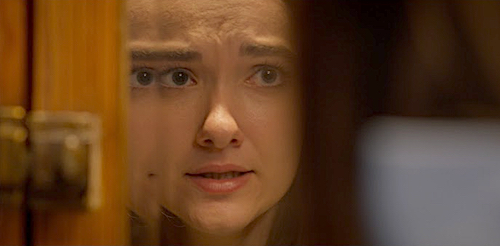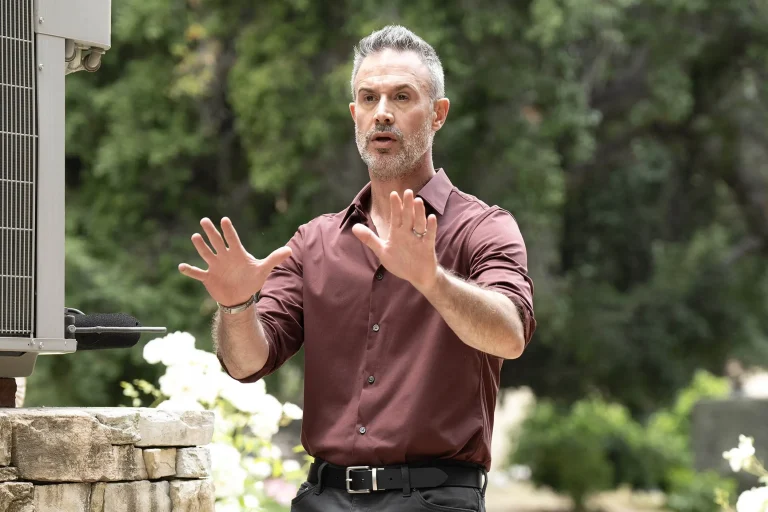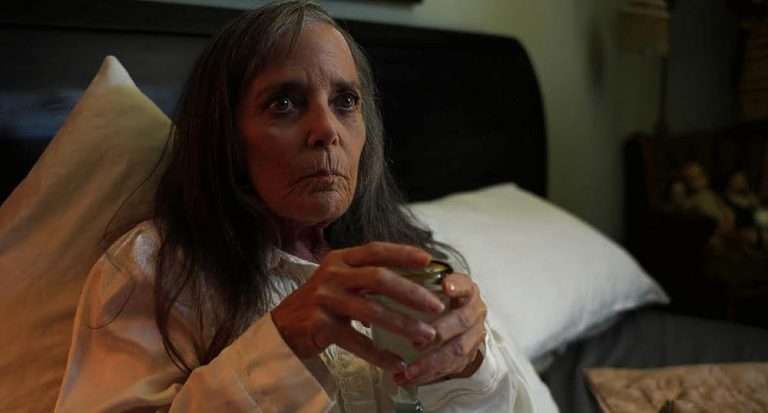If you have faith in God, it’s important to understand that God exists uniquely within our world, including religions and our way of living together as a society. Humans have always been savages, and pretending that we are not doesn’t provide a valid justification. Warwick Thornton’s The New Boy delves into the themes of privileges and choices. It raises thought-provoking questions: Does religion diminish the value of our human existence? Is having a rigid identity truly significant in the vast scope of time and space? And can we freely entrust our freedom to the broader human community? Well, let’s find out. Spoilers Ahead!
The New Boy (2023) Plot Summary & Movie Synopsis:
The film opens with the scene of a policeman struggling to capture a small boy in a desert area. Surprisingly, despite his size, the boy seems to outmatch the man. Is it because of adrenaline, or does he possess some hidden strength? We’ll explore that aspect later. In any case, another policeman hits him with a boomerang, and he goes unconscious. The boy is placed inside a large bag and delivered to an orphanage in a remote area. Subsequently, we meet Sister Eileen, who shows great compassion towards the new boy. She even stands up to the policeman who tries to harm him. The boy quickly realizes that he has nothing to fear from Sister Eileen as she treats him very gently. Moreover, she gives him the freedom to do as he pleases without imposing rules on him.
Later that night, as the boy lies in bed, he slips underneath and rubs his palm, and suddenly, a small ball of fire appears. This brings great joy to the boy, and he often plays with it. As time passes, the other children attempt to befriend the new boy. However, he struggles to grasp the ways of the alleged ‘well-mannered living’ and prefers to maintain his unconventional manner. He goes about without wearing a shirt or shoes and wanders freely as he pleases.
Sister Eileen and her assistant, Sister Mum, never stop him from doing as he wishes. Eventually, the eldest boy, Johnny, is sent to work at Dermott Downs Station. Sister Eileen, under the guise of Dom Peter, reluctantly writes a letter that, while she acknowledges the need for additional labor on farms due to the war, she disapproves of subjecting a mere 13-year-old boy to such laborious conditions.
Why is Sister Eileen trying to hide the whereabouts of Dom Peter?
There isn’t much cause for suspicion; it arises from Sister Eileen’s determination to keep the orphanage safe. Dom Peter is no longer alive, and if this information gets out, there’s a possibility that someone else might take his place. So, why is it a bad thing for Sister Eileen? From what Sister Eileen is trying to convey to Michael, it appears that Dom Peter wasn’t a good man.
Michael, recently appointed as the new head-boy following Johnny’s departure, wants to discipline someone for stealing food. He suggests using caning as a form of punishment. Sister Eileen tells him that they haven’t used such ways of punishment on children for a long time. This implies that Dom Peter may have disciplined the children harshly.
Therefore, if news of Dom Peter’s absence were to become known and someone else with a similar mindset took over, it would be difficult for Sister Eileen to protect the well-being of the children. So, she conceals this information with the assistance of Sister Mum and George, a helper at the orphanage. Eileen occasionally even forges Dom Peter’s signature, an action she considers a sin. She keeps the children away from this matter to prevent them from sharing in that sin.
How does the New Boy start to question the norms?
As time passes, the new boy observes the behaviors of the people around him. It’s like two separate worlds looking at each other, trying to comprehend their differences. The new boy struggles with simple tasks like using a spoon. He doesn’t understand why chores are sung and doesn’t adhere to the church’s rules. Sister Eileen allows him this freedom, believing that with time, he will adapt.
However, Sister Eileen is unaware of the boy’s unique interactions with a figurine of Jesus. She requests the figurine for the church, and when it arrives, the new boy is intrigued by it. As Eileen places nails in the figurine, the boy feels the pain as if it were put into him. While everyone else sees it as a representation of Jesus, the new boy receives a response from it…it blinks at him!

Later, a series of miracles involving the new boy occurs at the orphanage. When a snake bites Michael, the new boy arrives in time to suck out the venom, saving his life. The boy even brings multiple snakes as offerings to Jesus Christ, but the others fear them and kill them. He takes one dead snake and miraculously brings it back to life, triggering a thunderstorm nearby. When a fire breaks out near the orphanage from the thunder, boys from the orphanage go to extinguish it along with George. In this process, Michael is severely burnt, and the boy uses his ball of fire to heal Michael. He even tries to emulate the suffering of Jesus by putting nails in his palms. Sister Eileen gradually realizes that the boy may be a divine sign from God.
She’s concerned that raising the boy to divine status might pose a threat to Christianity and its beliefs. Dealing with something so mysterious is unsettling for her, and the boy’s situation pushes her into a difficult position. It highlights the age-old conflict between faith and disbelief. Faith remains one of the most fragile aspects of human existence, and there’s always the fear of adapting to the unknown.
The New Boy (2023) Movie Ending Explained:
How does the New Boy, Francis, lose his powers?
When they see that the new boy is different from the rest, they decide to turn him into one of their own. Hence, the climax moves towards that of a happy little guy who made the figurine of Jesus wear clothes and sleep on a bed. The boy even removes the nails from the figurine. Does the boy have a connection to the Divine? Why can only he see the figurine blink at him?
Just for once, forget about the magical powers. Let’s look at it as simply as possible. Think of the new boy as a child taking care of his toy. The boy feeds it, puts clothes on it, removes nails as he feels that it gives the toy some sort of discomfort, and then puts it on the bed. He is just taking care of his toy, and we have a problem with that, too, don’t we?
Since the new boy becomes a threat to Sister Eileen’s beliefs, she decides to baptize him and give him a name. Is he ready now? It doesn’t concern her because she believes that baptizing him might show others that he’s not beyond their beliefs. But rather a bit confused, and now he remains calm due to the strength of his religious faith. The new boy is given a name, and he is Francis now.
Before this, the figurine is brought again from the bed to the church, and with the nails being placed, Francis once again bleeds. Then, at the moment of his baptism, Sister Eileen immerses his hands in the holy water, and miraculously, the blood and wound disappear. The boy worries that he may have lost his powers. He rushes to his dorm room, hides under his bed, and rubs his palm. Unfortunately, the ball of fire is replaced by the longest silence Francis has ever experienced.
George approaches him, offering a pair of shoes he made. Francis now wears a shirt, combs his hair, and dons shoes. He’s trying to embrace civilization, or at least attempting to. However, the figurine no longer blinks at him. Remember when you stopped seeing the world in colors? When you put away your most beloved toy? Francis grows up to become a regular boy who has lost his magic, called childhood. At the end of the film, we witness Francis picking up a small snake and keeping it hidden from the world. It’s a small remnant of his past, perhaps fading away as the future unfolds.
Does religion diminish the value of our human existence? Is having a name truly significant in the vast scope of time and space? And can we freely entrust our freedom to the broader human community? Well, we all have grown beyond these questions, haven’t we?






